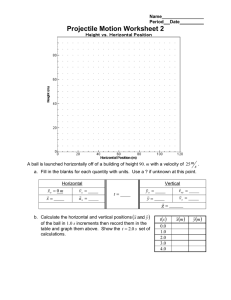Contents
Find one example of each type of flow which involved India and Indians, and write a short account of it. The Bretton Woods system was the first system used to control the value of money between different countries. It meant that each country had to have a monetary policy that kept the exchange rate of its currency within a fixed value plus or minus one percent in terms of gold. It meant that each country had to have a monetary policy that kept the exchange rate of its currency within a fixed value—plus or minus one percent—in terms of gold. The IMF and World Bank are referred as twins of Bretton Woods. The post-war international economic system is also described as the Bretton Woods System.

Bretton woods – Bretton Woods is the name of hotel in USA where the national monetary and financial conference held in 1944 to ensure the stable economy. Food offers many examples of long-distance cultural exchange. Traders and travellers introduced new crops to the lands they travelled.
Book: India and the Contemporary World-II
The Bretton Woods conference established the International Monetary Fund to deal with external surpluses and deficits of its member nations. The Bretton Woods Conference established the International Monetary Fund to deal with external surpluses and deficits of its member nations. The Bretton Woods system of international monetary management established the rules for commercial and financial relations among the world’s major industrial states. The Bretton Woods system was the first example of a fully negotiated monetary order intended to govern monetary relations among independent nation-states.
In order to preserve economic stability and full employment in the industrial world, the post-war international economic system was established. The International Bank for Reconstruction and Development was set up to financial post-war reconstruction and they started the financial operations in 1947. Under the agreement, currencies were pegged to the price of gold, and the U.S. dollar was seen as a reserve currency linked to the price of gold. Decision-making authority was given to the Western industrial powers. The US was given the right of veto over key IMF and World Bank decisions.

The Bretton Woods system Opened an era of unique growth of trade and incomes for the Western industrial nations and Japan. The Bretton Woods Agreement was finalised in July 1944 at Bretton Woods in New Hampshire, USA. It established the International Monetary Fund and the World Bank to preserve global economic stability and full employment in the industrial world. These institutions also dealt with external surpluses and deficits of member nations, and financed post-war reconstructions. It was clear during the Second World War that a new international system would be needed to replace the Gold Standard after the war ended. The design for it was drawn up at the Bretton Woods Conference in the US in 1944. US political and economic dominance necessitated the dollar being at the centre of the system.
Describe any three features of Bretton Woods Agreement.
This agreement was signed between the world powers in July 1944 at Mount Washington Hotel situated in Bretton Woods in New Hampshire, USA. Lastly, Britain took generous loans from USA to finance the World War. Since India was an English colony, the impact of these loan debts was felt in India too.
Even ‘ready’ foodstuff in distant parts of the world might share common origins. It is believed that noodles travelled west from China to become spaghetti. Or, perhaps Arab traders took pasta to fifth-century Sicily, an island now in Italy. Similar foods were also known in India and Japan, so the truth about their origins may never be known. Yet such guesswork suggests the possibilities of long-distance cultural contact even in the pre-modern world.

As international prices crashed, prices in India were also plunged. Between 1928 and 1934, wheat prices in India fell by 50 per cent. The International Bank for Reconstruction and Development was set up to finance postwar reconstruction. The IMF and the World Bank are referred to as the Bretton Woods institutions or sometimes the Bretton Woods twins. In 1971 the U.S. gold supply was no longer adequate to fulfil dollars in circulation, so President Richard M Nixon ordered a temporary suspension of dollar’s exchange to gold.
Decision-making in these institutions is controlled by the Western industrial powers. The US has an effective right of veto over key IMF and World Bank decisions. The main feature of the system was an obligation for each country to adopt a monetary policy that maintained its exchange rates within 1 per cent by tying its currency to gold and the ability of the International Monetary Fund to bridge the imbalance of the payments. There was a need to address the lack of cooperation that existed among the countries and to stop the devaluation of the currencies as well. The main aim of the post-war international economic system was to preserve economic stability and full employment in the industrial world. Its framework was agreed upon at the United Nations Monetary and Financial Conference held in July 1944 at Bretton Woods in New Hampshire, USA.
Top Courses for Class 10
In a bid to protect the American economy, USA doubled import duties. It affected USA the worst on account of its being a global loan provider and the biggest industrial nation. The three types of movements or flows within the international economic exchange are trade flows, human capital flows and capital flows or investments. These can be explained as—the trade in agricultural products, migration of labour, and financial loans to and from other nations. The post-war international economic system is also often described as the Bretton Woods system. The IMF and the World Bank commenced financial operations in 1947.
- The post-war international economic system is also described as the Bretton Woods System.
- Lastly, Britain took generous loans from USA to finance the World War.
- Its framework was agreed upon at the United Nations Monetary and Financial Conference held in July 1944 at Bretton Woods in New Hampshire, USA.
- The British government’s decision to abolish the Corn Laws resulted in losses for the agricultural sector, but progress in the industrial sector.
- The US was given the right of veto over key IMF and World Bank decisions.
- Has been provided alongside types of Explain Bretton wood system ?
The decision of MNCs to relocate production to Asian countries led to a stimulation of world trade and capital flows. This relocation was on account of low-cost structure and lower wages in Asian countries. It also benefitted the Asian nations because employment increased, and this resulted in quick economic transformation as well. Explain the three types of movements or flows within international economic exchange.
Chapter: 4. The Making of a Global World
Also, agricultural over-production proved to be a nuisance, which was made worse by falling food grain prices. To counter this, farmers began to increase production and bring even more produce to the markets to maintain their annual incomes. This led to such a glut of food grains that prices plummeted further and farm produce https://1investing.in/ was left to rot. Most countries took loans from the US, but American overseas lenders were wary about the same. When they decreased the amount of loans, the countries economically dependent on US loans faced an acute crisis. In Europe, this led to the failure of major banks and currencies such as the British pound sterling.
By 1973 the system collapsed countries were free to choose any exchange arrangement for their currency. The decision of MNCs to relocate production to Asian countries. It led to an era of unprecedented growth of trade and incomes. Bretton Woods agreement was signed among the world powers in 1944. The Bretton Woods institutions were successful in their aim as Europe and Japan rapidly built their economies. Afterwards institutions shifted their attention towards developing countries.
Food began to be imported more cheaply into Britain, and thousands of workers involved in cultivation became unemployed. However, consumption increased and the industrial sector grew, with more workers being available in cities than in rural areas. The International Bank for reconstruction and Development, what is meant by bretton woods agreement class 10 known as the World Bank was set up to finance post- war reconstruction. The IMF and the World Bank are referred to as the Bretton Woods institutions or the Bretton Woods twins. Here you can find the meaning of Explain Bretton wood system ? Besides giving the explanation of Explain Bretton wood system ?
The second World war was a global war that lasted from 1939 to 1945. The amount of economic devastation and social disruption was beyond imagination. The questions posted on the site are solely user generated, Doubtnut has no ownership or control over the nature and content of those questions.
India was a hub of trade in the pre-modern world, and it exported textiles and spices in return for gold and silver from Europe. Many different foods such as potatoes, soya, groundnuts, maize, tomatoes, chillies and sweet potatoes came to India from the Americas after Columbus discovered it. The British government’s decision to abolish the Corn Laws resulted in losses for the agricultural sector, but progress in the industrial sector.